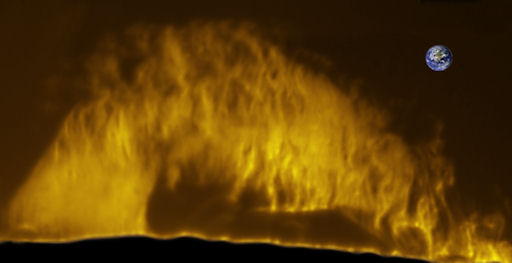Earth Watch Report
Hundreds evacuated as Indonesia volcano erupts

by Staff Writers Jakarta (AFP) Nov 03, 2013
A volcano in western Indonesia erupted twice Sunday, hurling red-hot ash and rocks up to seven kilometres into the air and forcing more than 1,000 people to flee their homes.
Mount Sinabung on Sumatra island erupted in September for the first time in three years, forcing thousands to flee their homes, and has been erupting intermittently ever since.
Early Sunday it hurled a column of ash seven kilometres (four miles) into the air, then erupted again in the afternoon.
Police and troops began evacuating residents from villages in a three-kilometre area around the volcano after the first eruption, said national disaster agency spokesman Sutopo Purwo Nugroho.
"1,293 residents living around Mount Sinabung were evacuated to safer areas," he said.
"The number of evacuees will rise."
..........

Villagers walk on a road covered with volcanic ash from Mount Sinabung's eruption in Mardingding, North Sumatra, Indonesia, Monday, Nov. 4, 2013. The volcano erupted Sunday, unleashing volcanic ash high into the sky and forcing the evacuation of villagers living around its slope. (AP Photo/Binsar Bakkara)
Mount Sinabung spews volcanic ash as it erupts as seen from Simpang Empat, North Sumatra, Indonesia, Sunday, Nov. 3, 2013. Officials raised the volcano's alert status to the second-highest level after the 2,600-meter (8,530-foot) -high mountain erupted early Sunday. (AP Photo/Ade Sinuhaji)
A hand print is seen on the hood of a car covered with volcanic ash from the eruption of Mount Sinabung that falls in Tiga Nderket village, North Sumatra, Indonesia,Monday Nov. 4, 2013. The 2,600-meter (8,530-foot) high volcano has been erupting since Sunday, unleashing volcanic ash high into the sky and forcing the evacuation of villagers living around its slopes. (AP Photo/Binsar Bakkara)
..........
























